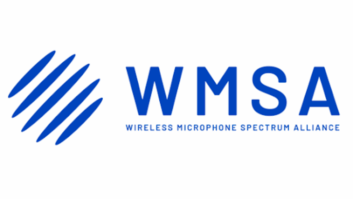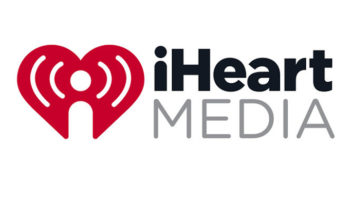
This is one of those odd stories that illustrate the way business and government sometimes work together to build new and powerful communications systems. The outcome could affect many consumers who own and use GPS guidance systems in their cars or for outdoor recreation. To a certain degree, it could affect radio engineers.
The story began with an FCC allocation for a satellite communication system in the spectrum 1525 to 1559 MHz — an allocation that until now has had limited commercial appeal and is not heavily used.
Along came a company with a vision to help supply wireless data services, what we used to know as the cell phone industry. Wireless data is in short supply and high demand.
The company, LightSquared, came up with an idea to make this L Band spectrum useful for terrestrial data: Use the spectrum to build a terrestrial network and connect it up with satellites. The plan had a lot to like. An underutilized segment of spectrum would be converted into a highly profitable and useful segment of the wireless data industry.
This is where the government help comes in. When this spectrum was allocated, it was for satellite communications; it was not a license to build a terrestrial network. So a petition for an exemption was filed, quietly and just before the Thanksgiving holiday, on Nov. 19, 2010. Instead of the normal 30-day comment period, the petition was “fast-tracked,” which allowed only a few days for comment.
The FCC then ruled in favor of LightSquared and gave it the permit to build a new terrestrial network of high-power transmitters for high-speed data. The permit allows up to 40,000 of these repeaters to be built at effective radiated powers of up to 15,000 watts.
THERE’S JUST ONE PROBLEM …
Although the proposal was fast-tracked at the commission, there were technical concerns. Specifically, LightSquared spectrum was perilously close to a satellite system that has been in place for many years: the network of GPS satellites used for civilian and military purposes.
Generally, it isn’t a good idea to mix terrestrial and satellite uses on the same or nearby frequencies. Satellite communications require receivers to be able to detect very low signals coming from outside the earth’s atmosphere. That requires a receiver that has exceptional sensitivity. Terrestrial services, on the other hand, use relatively high-power signals to convey large amounts of data over a wide geographical distance.

This table from the Garmin report describes the effect of Lightsquared service on a Garmin aviation navigation device.
In this case, the GPS system requires receivers to not only detect low-power signals but simultaneously to detect a range of satellites that are spread across the visible sky. Now mix in a huge number of terrestrial amplifiers on a close frequency that require omnidirectional antenna systems and high power. Due to their proximity and power requirements, these terrestrial amplifiers likely will overwhelm the sensitive GPS receivers that are trying to pick out very weak satellite signals.
And that is just what happened, in spite of LightSquared’s claims that its own extensive testing indicated little to no interference would occur.
The main L1 band of frequencies used by the GPS system is centered on 1575.42 MHz and extends down to 1559 MHz. Testing by Garmin Corp. showed that operations proposed by LightSquared would cause a typical consumer GPS receiver to fail within 3.6 miles of its terrestrial repeaters. An FAA-certified General Aviation receiver that employs GPS to help determine aircraft height began to fail within 13.8 miles of a terrestrial transmitter, according to the report, which was sent to the FCC in January. (The study can be found at http://tinyurl.com/rwgps.)
As I do the math, this comes out to approximately 1.6 million square miles of interference to consumer units and about 6.4 million square miles of interference to aviation uses. Ouch.
It makes the engineer in me just sigh. Wouldn’t you think the possibility of massive interference would be obvious before investors and regulators wrote contracts and rules that committed billions of dollars?
This calls to mind the recent pleas from the Society of Broadcast Engineers to mandate that FCC commissioners retain at least one staff member with an engineering background. If such a rule were in place, would this proposal have received fast-track approvals from Julius “Cell Man” Genachowski?
INCONSTANT RULES
The whole affair reminds me of the history of the satellite radio industry.
It may seem like I am dredging up buried garbage. But when initially proposed and awarded, this was supposed to be a satellite service that delivered programs directly to a consumer receiver. When that failed to be possible technically, a decision to allow the service instead to become a second terrestrial radio band was made without comment, even though doing so changed the terms of the original license and altered the competitive landscape radically.
Satellite radio eventually became a competitive Frankenstein, vowing to destroy the existing terrestrial radio industry and sowing the market with devices intended to interfere with standard FM band. And when the two satellite radio companies mismanaged their way to bankruptcy with their impossible giveaways and contracts for high-priced programming, they were allowed to merge, eliminating any inconvenient direct competition.
OK, I know this is politics and that the FCC has a mission to assist pioneering uses of the electromagnetic spectrum. But as someone who has worked in an industry that is both successful and highly regulated for my entire career, it does seem as if certain rule changes happen too easily and without a proper evaluation of the potential consequences. This doesn’t seem, well, fair. Or even sensible at times.
Rule shifts of this kind can greatly change the value of a spectrum allocation that suddenly has newfound abilities. LightSquared is boasting that its proposed 4G data services eventually will be worth $120 billion. If the original spectrum allocation had included the right to build out a terrestrial network, it would have likely raised more bidders and a higher market value in auction. Observers are rightly uncomfortable when such sudden shifts in rules allow one company to suddenly own valuable property after a supposedly open auction process.
The lure of business may obscure potential harm to established users from changes that are poorly thought out and motivated by a desire to create fabulous new profits.
HOPE FOR THE BEST
GPS uses are numerous in radio. Many studios use professional clock systems that synchronize via the GPS system. Station groups with single-frequency networks rely on GPS timing to keep their signals in sync. Timing drift results in coverage being converted to interference. Consultants use them to determine tower locations and antenna elevations. GPS is used widely for measuring broadcast radials for AM and FM service.
LightSquared says it will fix the problem and is designing its systems to protect GPS with exceptional attention to minimizing out-of-band interference. Its latest proposal offers to use only the lowest 10 MHz of its frequency allocation in the initial buildout to provide protection to existing GPS systems.
It also turns the blame on the GPS industry for relying on receivers that are prone to interference. Somehow this claim seems hollow given the massive change in use that has been permitted to LightSquared and the secretive way in which its license was changed.
The FCC has stated that LightSquared must prove it has resolved the GPS interference issue before it can continue its deployment. Let’s hope both parties take this responsibility seriously — and that no more “Midnight Fixes” emerge from this important regulatory agency.





